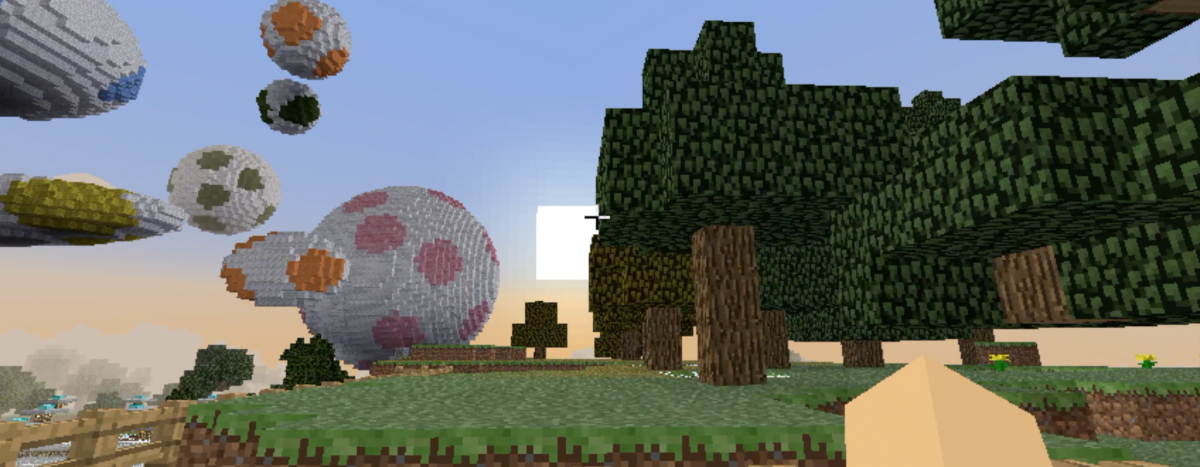In an earlier blog post, I wrote about the specific application of using games to help students with executive functioning issues. However, Games are engaging for all students and can help all students learn course content and life skills.
Students can learn skills and techniques for planning through digital games like strategy games, simulation games, and role-playing games. In these games, they learn skills such as predicting game events and switching between short- and long-term goals. They learn to prepare for an event by stocking up items in inventory, and they learn from their mistakes (Kulman, 2014).
Games like Minecraft and LittleBigPlanet and coding apps like Scratch help to support planning skills through fun and interactive means. Students need “foresight, planning, dividing the plan into steps, and then actually producing the work,” (Kulman, 2014, p. 118) to be successful.
I have some experience using and teaching coding applications like Scratch, Scratch Jr., Tynker, and Hopscotch. And I live in a house with teenagers, some of whom went through pretty long and obsessive Minecraft phases. But until this week, I had not personally spent any time in Minecraft myself.
That said, my first experience in going through the MSU College of Education’s hosted tutorial world was interesting. When I went to the library to work on my homework, I took my 15-year-old expert son with me. I am so glad I did.
In this video, I walk through parts of the MinecraftEDU Tutorial World and narrate my walkthrough with some information about my experience and how I see Minecraft in my teaching context.
My Difficulty / Challenge
I experienced several difficulties as I went explored in the MinecraftEDU Tutorial World. Two of them are particularly worth noting.
First, I had a difficult time making a long jump over a bridge that had fence pieces on each side. I did not screencast that scene and cannot remember exactly where it was. What I remember is that my son had to help me. He initially made the jump for me but I stubbornly insisted on doing it myself which took ten more minutes of frustrating falling and running up the hill on my part and lots of head shaking on his part. Really, he was a very patient teacher and once I got across that bridge on my own, I was thrilled.
Second, I had a hard time figuring out what to do in the Dig and Build zone. There were “Dig” and “Build” signs in bold all over the place but I could not actually dig anywhere. Finally, I did what my own kids would have done: I read the Wiki, where I finally figured out that all the players before me had dug the ground and built stairs out. So I followed those stairs out.
Relating My MinecraftEDU Experience to My Background
I think I had the difficulty with the jump because I did not grow up playing video games. I have owned a few systems and playing games has been a fun activity during short bursts in my life but I have not logged a lot of hours. So when I got to that jump, I just did not have the experience. I probably could have let my son play me through but I am stubborn and tried again and again. In the end, it was worth it.
My second difficulty resulted from the busyness of my life. I was probably one of the last students to explore the tutorial world and all the digging and building had already been done. The “Dig” and “Build” signs didn’t apply to me because I was just too late.
Minecraft as an Assessment Tool
Two of the criteria in my Rubric 4.0 are based on Universal Design for Learning (Meyer, Rose, & Gordon, 2014).
Allowing students to use games like Minecraft as an assessment tool can potentially meet both of them. Minecraft could allow for multiple means of representation (criterion 6) and multiple means of action and expression (criterion 10).
When students can demonstrate learning through Minecraft (multiple means of action and expression), they are engaged and motivated. Teachers like John Miller say that when he had students create in Minecraft, they were so completely engaged they filled his classroom at lunch every day and groaned at the end of class when he had to turn off the server (Gallagher, 2014).
My Teaching and Minecraft
Minecraft could definitely have a place in my classroom. In my current role as a STEM teacher, I am typically on a pretty tight time frame. I am responsible for delivering specific content to many students. However, I could think of some general ways to use Minecraft now:
- As a way to introduce content to my students
- As an ending enrichment activity to early finishers
- To support the Tynker lessons I teach in fourth-grade. Minecraft and Tynker have partnered up to let students do Tynker coding in a Minecraft environment.
These are general ideas but I look forward to developing more specific ones in time.
References
Gallagher, C. [Colin Gallagher]. (2014, February 19). Minecraft Minechat Episode 23: John Miller [Video file]. Retrieved from https://www.youtube.com/watch?v=4ev0R_xzMEo&feature=youtu.be
Kulman, R. (2014). Playing smarter in a digital world: A guide to choosing and using popular video games and apps to improve executive functioning in children and teens. Plantation FL, FL: Specialty Press, Inc.
Meyer, A., Rose, D.H., & Gordon, D. (2014). Universal design for learning: Theory and practice. Wakefield, MA: CAST.
